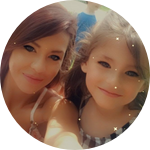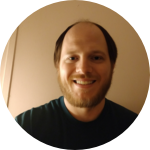About This Project
Behçet’s disease causes aggressive immune attacks with few regenerative options. This project proposes a new therapy using umbilical cord stem cells, spiny mouse regeneration cues, and immune reprogramming. The goal is to shift T helper 17 (TH17) pathways from inflammation toward healing. TH17 cells are known drivers of chronic inflammation in Behçet’s, and modulating their response may open the door to tissue repair. Funding will support outreach, expert feedback, and prep for testing.
Ask the Scientists
Join The DiscussionWhat is the context of this research?
This project began after watching someone I love struggle with Behçet’s disease—a rare autoimmune condition caused by immune system dysfunction. I wondered: what if the same immune system causing damage could be redirected to heal instead? That led me to regenerative biology—umbilical cord stem cells, scarless healing in the spiny mouse, and immune modulation. My focus is on T helper 17 (TH17) cells and interleukin-22 (IL-22). TH17 cells drive inflammation in Behçet’s, while IL-22 promotes tissue repair. By suppressing IL-17 and promoting IL-22, we may be able to shift immune behavior from destruction to regeneration. Research such as Zenewicz et al. (2010) supports IL-22’s role in epithelial healing. What began as a personal mission has grown into a therapeutic concept with broader potential.
Full paper and sources: https://medium.com/@vdgarvie.b...
What is the significance of this project?
Millions suffer from chronic pain, autoimmune disease, and age-related degeneration—but most treatments only manage symptoms. This project explores a new therapeutic model focused on activating regeneration from within by reprogramming immune activity. Instead of suppressing inflammation, the goal is to redirect it toward tissue repair. Inspired by immune dysfunction in Behçet’s disease and informed by stem cell therapy and the scarless healing of the spiny mouse, this research offers a new framework for healing. With two papers already published, this project is positioned to advance a concept that could reshape how we treat chronic illness, trauma, and age-related decline—not by managing damage, but by repairing it at the source.
What are the goals of the project?
The immediate goal is to prepare for early-stage experimental validation by building from my now-complete three-paper research series. These papers outline a regenerative therapy model that repurposes TH17 cells toward healing using IL-22 signaling and stem cell support. Funding will support refining the translational framework, creating visual diagrams, and consulting with experts to finalize the testing approach. I will also prepare outreach materials to clarify the biological logic in a public-facing format and publish a summarized therapeutic roadmap by the end of the three-month period. All updates will be publicly documented.
This work lays the foundation for future studies in immune modulation, inflammation reversal, and long-term regeneration in Behçet’s and beyond—setting the stage for lab testing and, if successful, a regenerative therapy lab focused on immune-guided healing.
Budget
This initial $5,000 will support a focused three-month phase to refine my regenerative immune therapy concept inspired by Behçet’s disease. Most funds will go toward consulting with a scientific advisor to clarify the biological logic and guide next steps. A portion will support basic living costs so I can focus fully on research without interruption. The goal of this phase is to build a strong scientific foundation and create a clear, well-supported framework to guide future lab collaboration. Supporting materials developed will aid in planning, outreach, and scientific discussion. This is Phase 1 of a broader initiative to reprogram destructive immune responses into regenerative ones. While the idea began from personal experience, the long-term vision is to develop strategies for regenerative immune modulation that could benefit many chronic and degenerative conditions.
Endorsed by
 Project Timeline
Project Timeline
This project will unfold over a 3-month period. I’ll begin by translating the completed research framework into an experimental outline, then consult a scientific advisor for validation and refinement. I’ll produce high-quality visuals and a summary report to guide future lab steps and public understanding. Supporters will receive regular updates, including immune pathway diagrams, reflections, and key findings.
May 26, 2025
Project Launched
May 29, 2025
Refine therapy model and draft testing plan.
Jun 20, 2025
Advisor review and model validation
Jul 11, 2025
Create visuals and outreach toolkit.
Aug 21, 2025
Publish summary and prep Phase 2.
Meet the Team
Affiliates
Team Bio
Vincent Garvie is an independent researcher exploring regenerative therapy through immune reprogramming. He developed a concept combining stem cells, spiny mouse regeneration, and Behçet’s immune pathways. He is currently advised by Dr. Kamel Hamzaoui, whose support helps validate the direction of the project. Scientific consultation is central to Phase 1, laying the foundation for future lab collaboration.
Vince Garvie
My name is Vincent Garvie. I’m a self-taught researcher and full-time father of three. Over the last six years, while raising my children at home, I’ve independently studied biology, immunology, and regenerative medicine.
This project began from a deeply personal place—my girlfriend lives with Behçet’s disease, a rare and aggressive autoimmune condition. As I learned more about how it affects the body, I started asking a new kind of question: What if the immune system’s destructive pathways could be redirected to heal instead of harm? That idea became the foundation for my research.
Since then, I’ve published a three-paper research series exploring a regenerative therapy strategy that combines umbilical cord stem cells, spiny mouse-inspired scarless regeneration, and immune pathway reprogramming using IL-22 and TH17 modulation. Though I don’t come from a university or lab, I’ve built this concept through independent research, lived experience, and a relentless drive to find new answers.
This campaign is my first public step toward turning that theory into a working model—and eventually, a therapy that could help people living with Behçet’s and beyond. I’m committed to collaboration, transparency, and open science.
.
Full paper and sources: https://medium.com/@vdgarvie.bio/healing-beh%C3%A7ets-from-within-a-three-paper-strategy-for-redirecting-th17-immunity-d20d732db006
Additional Information
I don’t have formal credentials, but I’ve spent the last six years raising my children full-time while studying science independently. Inspired by someone close to me who suffers from Behçet’s disease, I built this therapy concept from the ground up. I’ve now published a three-paper research series, created supporting diagrams, and committed myself fully to this vision. I may not look like a traditional researcher—but I believe innovation can come from unexpected places, and I’m ready to prove it.
Project Backers
- 1Backers
- 2%Funded
- $100Total Donations
- $100.00Average Donation

